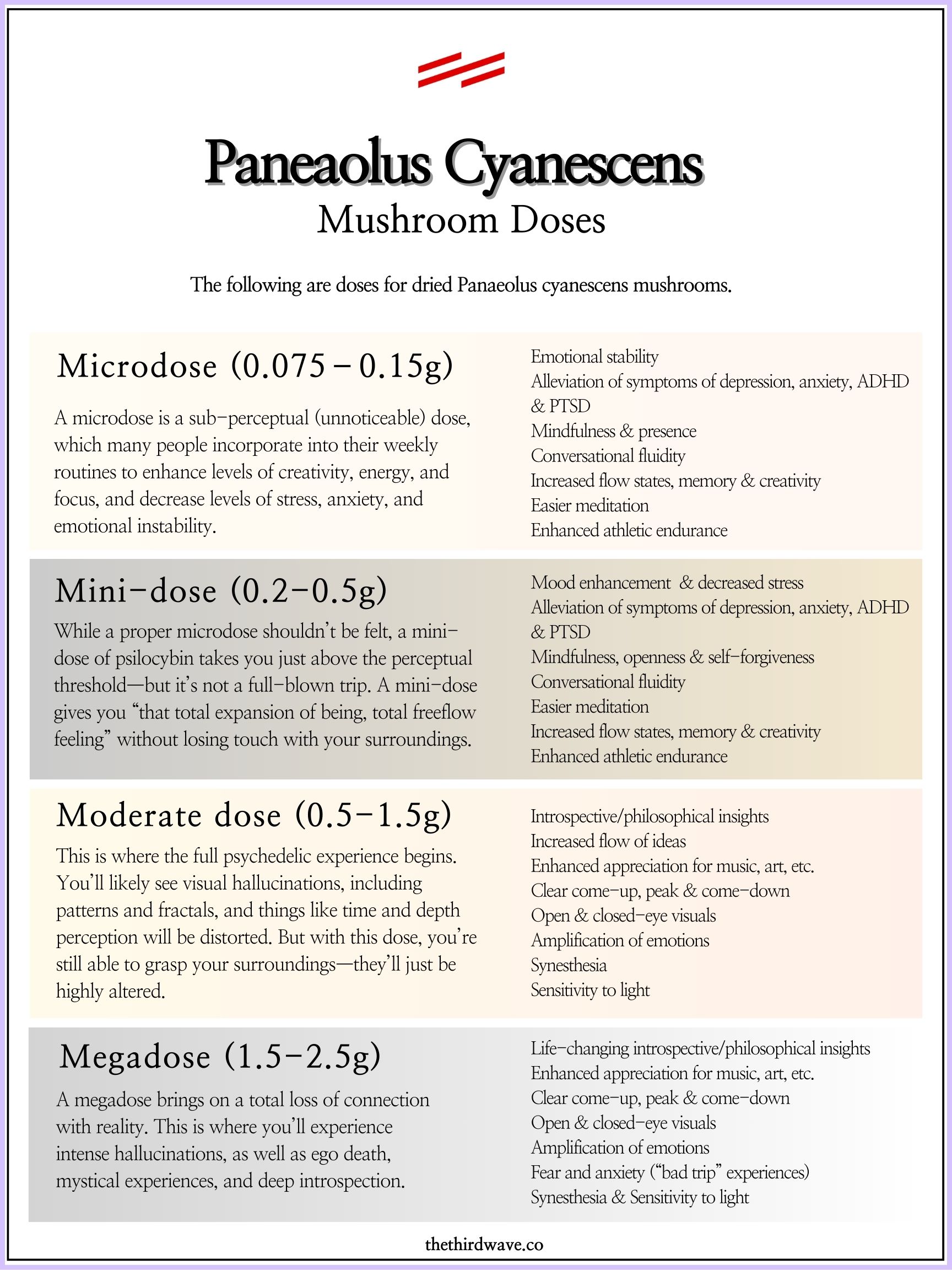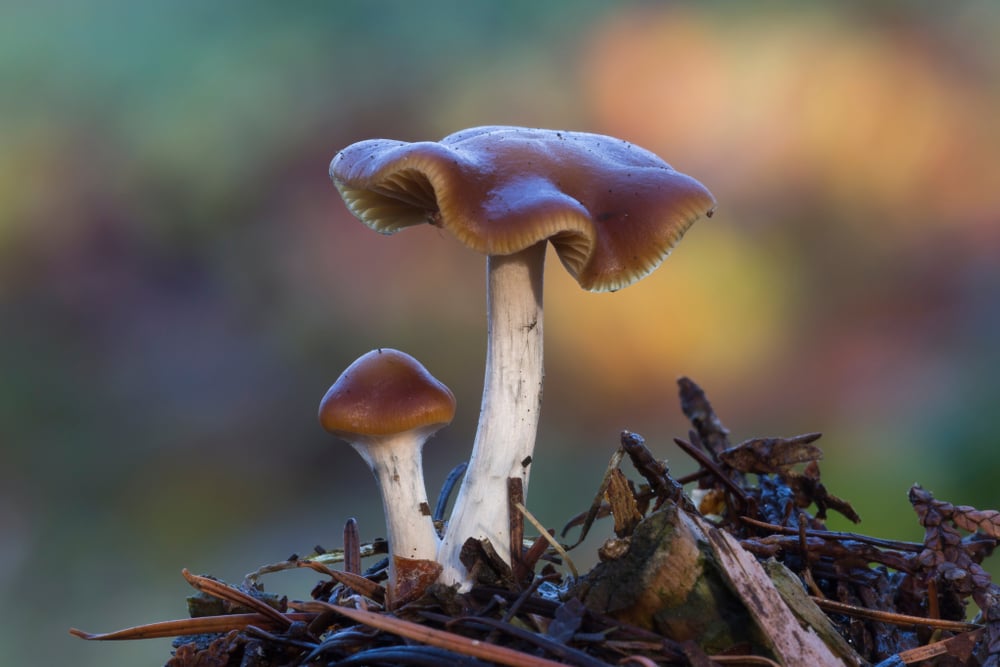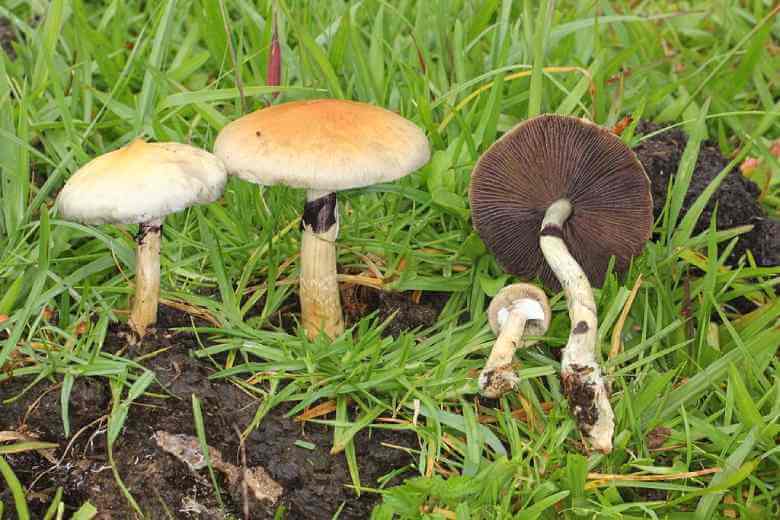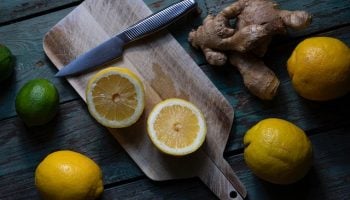Disclaimer: Psychedelics are largely illegal substances, and we do not encourage or condone their use where it is against the law. However, we accept that illicit drug use occurs and believe that offering responsible harm reduction information is imperative to keeping people safe. For that reason, this document is designed to enhance the safety of those who decide to use these substances.

Maria Katrina, better known as Kat, is a queer woman of color from Los Angeles, California. She is a trauma-informed Wellness Educator and Psychedelic Harm Reduction Consultant with a Bachelor of Science in Nursing and a Master of Science in Nurse Education. She comes with a strong background in acute health care, hospital administration, and ketamine treatment for mental health disorders. In addition to nursing, she contributes her talents to event health & wellness teams through medical aid, psychedelic harm reduction, and integration services.
After 13+ years of providing care to patients and their loved ones at the bedside, Kat continues to fulfill her desire to provide heartfelt care, healing spaces, and thoughtful education to her community and beyond through psychedelic education & integration support. She also facilitates peer support groups for health care providers, and provides harm reduction services and emotional support to public and private events around the world.
Kat is known for her gracious, enthusiastic attitude and her prowess as a caregiver, her affinity for emotional intelligence, and a lifetime of meaningful experiences to support her clients, colleagues, and community. She finds joy in the art of food, music, and nature, as well as a growing circle of friends! Connect with her on LinkedIn.
In the 2005 Encyclopedia of Psychoactive Plants, Galan O. Seid stated, “the blue meanie is the perfect alchemist: it transforms dung into gold, into the golden light of enlightenment.”
Referred to as the “crown jewel of psychedelic mushrooms,” Panaeolus cyanescens (P. cyanescens), or “blue meanies,” are one of the most revered species among mushroom growers and psilonauts.
These little brown mushrooms may look relatively unassuming, but don’t be fooled. Up to three times stronger than the common Psilocybe cubensis (P. cubensis), they are one of the most potent psychedelic mushroom species known.
Read below to learn about P. cyanescens, their effects, and tips and tricks for growing your own.
About Panaeolus cyanescens “Blue Meanies”
P. cyanescens go by synonyms, including “Hawaiins,” “Pan cyans,” and “blue meanies.” The blue meanies’ nickname origin is unclear and can be confused with a strain of P. cubensis, which also shares the nickname.
However, some people speculate P. cyanescens are the original blue meanies, and it’s these mushrooms that relate to the weird and buffoonish blue meanie characters in the Beatles’ Yellow Submarine movie.
In Asia, people in Bali have cultivated P. cyanescens mushrooms in native festivals and for sale to passing tourists for many years. Batik artists in Yogyakarta consume the mushrooms for inspiration for artistic endeavors, and the people of Samoa use P. cyanescens recreationally, sometimes prepared as a tea or mixed with coffee. Some historians have speculated P. cyanescens may also have a long tradition of usage in Java as a ritual drug.
Like other hallucinogenic mushrooms, P. cyanescens are a type of coprophilous or “dung-loving” fungi. They feed off nutrients in feces and are often found growing in horse and cow dung on grasslands.
cyanescens taxonomy listed on Wikipedia is as follows:
- Kingdom: Fungi
- Phylum: Basidiomycota
- Class: Agaricomycetes
- Order: Agaricales
- Family: Bolbitiaceae
- Genus: Panaeolus

History of Panaeolus cyanescens
After collecting specimens in Sri Lanka, mycologists Miles Berkley and Christopher Broome published the first P. cyanescens description in The Fungi of Ceylon in 1871. They initially categorized the mushroom species as belonging to the Agaricus genus, naming it Agaricus cyanescens.
In 1951, the species’ taxonomy was re-categorized by Dr. Rolf Singer, who named it Copelandia cyanescens. The Copelandia genus has since been deprecated, meaning it is no longer valid, and the species now belongs to Panaeolus – a genus characterized by mushrooms with speckled gills.
Although originally native to Asia, P. cyanescens is now widespread throughout the tropics, following in the footsteps of humans, livestock, and livestock dung. It is believed the mushrooms spread initially from Asia to Hawaii in the 1800s during the importation of cattle from the Philippines, and the species was also discovered in France due to the importation of horses from the same country.
A nine-year-old in France allegedly discovered the psychedelic properties of P. cyanescens after accidentally ingesting a strong dose. Reports of her discovery led legendary Swiss chemist Albert Hofmann to analyze the species, confirming the presence of the psychoactive alkaloids psilocybin and psilocin.
Where to Find Panaeolus cyanescens
P. cyanescens grows in tropical and subtropical regions of both northern and southern hemispheres. In tropical areas, P. cyanescens grow all year round, whereas in the subtropics, in regions above and below the tropics, they grow from late spring to autumn.
As mentioned, you can mostly find P. cyanescens growing on cattle and horse dung. However, you can also find them growing in grasslands fertilized by grazing animals, appearing as scattered individual mushrooms and in clusters.
Regions where P. cyanescens frequently grow include:
- Central America
- South America, most commonly in Brazil and Bolivia
- Southeast Asia, most commonly in the Philippines, Thailand, and Bali
- Eastern Australia
- India
- Africa, including South Africa, DRC and Madagascar
- The Caribbean islands
- Oceania (Australasia, Melanesia, Micronesia, and Polynesia)
- The United States, most commonly in Louisiana and Florida
How to identify Panaeolus cyanescens
As a rather regular-looking mushroom, it can be easy to mistake P. cyanescens for other mushroom species, especially those belonging to the Panaeolus genus. For example, Panaeolus antillarum, a non-psychedelic mushroom, is often mistaken for P. cyanescens and was once thought to be the same species.
Based on identifier observations recorded on the mushroom foraging database iNaturalist, here’s a list of features you can use to identify P. cyanescens:
Caps
P. cyanescens has caps that are 1.5 to 4 cm wide across and convex (dome-shaped). Young caps are light brown, and mature caps are off-white or light gray, sometimes with yellow or brown tones.
When damaged, the caps may turn blue or green, possibly explaining the name “blue meanies.” The caps may also change color as the mushroom tissue absorbs and loses water.
Gills
The gills (papery ribs underneath a mushroom cap) of P. cyanescens have white edges. They are initially gray in color but become black as the mushrooms mature.
The spore print on the gills appears as irregular blotches, and the gills are broadly attached to the stem, otherwise known as adnate attachment.
Stipe/ Stem
P. cyanescens stems are around 2-3 mm thick, 7-12 cm long and enlarged at the base.
The stems are the same color as the caps, also turning blue when bruised, but unlike the caps, they may have a white frost-like cover.
Edibility
P. cyanescens has been described as having a farinaceous (starchy) odor and texture.
Although this feature is categorized as edibility, we strictly recommend you don’t eat any mushrooms for identification purposes, as ingesting the incorrect species could have fatal consequences.
Foraging word of warning
Magic mushroom foraging can be a great way to connect with nature, and striking lucky, you may come across an abundance of mushrooms of your choice.
However, misidentifying mushrooms is a huge risk. In the case of P. cyanescens, the mushroom can be easily mistaken for Pholiotina rugosa, a similar-looking species which contains deadly amatoxins, and Galerina marginata, another look-alike which could also be fatal if accidentally eaten.
For this reason, if it’s your first time foraging, we recommend going with experienced others and ensuring you do lots of research about identifying your mushroom of choice beforehand.
If you’re looking to acquire Panaeolus cyanescens but don’t want the risk of foraging, you could consider growing your own. Growing mushrooms is not only much safer than foraging but since mushroom grow kits work in all countries and weathers, you won’t be limited to geographical location or season. We have a section about how to grow P. cyanescens below.
Panaeolus cyanescens psychedelic effects
From an estimated 1.15% psilocybin and 0.9% psilocin, to 2.5% psilocybin and 1.9% psilocin, P. cyanescens has a higher-than-average potency and therefore, strong psychedelic effects. Some strains, such as TTBVI, may even contain up to 4.58% alkaloids, making this the most potent psilocybin mushroom known in the world at this time.
Differences in potencies and unique chemical makeup between mushroom species lend themselves to subtle variations in psychedelic effects.
For P. cyanescens, some of the most frequently reported effects include:
- Strong and vivid visual hallucinations
- Euphoria
- Lucidity
- Positive headspace
- Shifts in perspective of reality
- Changed sense of body and ego
Testimonies about Panaeolus cyanescens taken from Erowid describe intense, sometimes fearful, but often ecstatic experiences. One user shares,
The mushrooms had such a strong character… it was like you could really feel their presence and them starting to hit you harder and harder. It was just ecstasy. This was definitely my best trip ever.
Reports of P. cyanescens experiences also describe vivid hallucinations and dream-like scenarios. For instance, another Erowid user wrote,
I now felt as though my spirit had completely left my physical body and I was now drifting through ancient rooms decorated beautifully in fine rugs, and vividly coloured ceilings.

Potential therapeutic benefits
Though there’s no clinical evidence documenting specific benefits for P. cyanescens, we know of a growing body of research and anecdotes that altered states of consciousness associated with psilocybin can have many therapeutic effects, such as:
- Increased insight
- Increased openness to new ways of thinking
- Empathy
- Greater self-awareness
- Enhanced connectedness
- Improved capacity to adopt healthier habits
- Decreased rumination
Psilocybin and psilocin may also have physical benefits to nerve cells.
For instance, a Harvard study found psilocybin increased the number of synapses (connections between nerve cells) in the brains of mice, suggesting it could help restore damage caused by nerve cell loss in psychological disorders.
Panaeolus cyanescens risks
Although the psychedelic effects of P. cyanescens lend themselves to potential benefits, the intensity of these mushrooms can also increase the risk of adverse psychedelic effects, such as:
- Anxiety
- Paranoia
- Fear
- The feeling of losing one’s mind or sanity
- Surfacing of unwanted memories
- Unpleasant and disturbing hallucinations
On Erowid, one user described their frightening experience whilst on P. cyanescens,
I felt growing anxiety within me, and the very fact that I was anxious served to frighten me even more.
No matter how much I tried to make reason out of the absurdity that is the mushroom experience, I just couldn’t. In fact, the very fact that I had tried and failed to relax my anxiety only made everything a lot worse, as I felt more helpless than ever.
Sometimes when challenges arise during psychedelic experiences, these can be opportunities for learning and personal growth, catalyzing significant psychological breakthroughs. Yet, it may be difficult to make sense of and process these challenges on our own.
As such, if you’re interested in experimenting with P. cyanescens or psilocybin in any other form, you could look to attend a retreat or ceremony where you’re actively supported in your journey.
Be sure to visit our directory of psilocybin retreat centers to see whether any of these well-vetted and legally operating centers interest you.
As well as psychological risks, P. cyanescens can have mild physical side effects, including:
- Nausea
- Increased heart rate and blood pressure
- Body temperature changes
In 2020, a study investigating the physical safety of P. cyanescens found the species had no toxic effects on the cell samples they tested. However, the study authors warned that people should have “cautioned use of higher concentrations” because of unknowns on how P. cyanescens interacts with the body.
How to use Panaeolus cyanescens
Dosage
The strength of the effects of magic mushrooms depends not only on potency and dose but also on personal factors such as:
- Tolerance to psychedelics
- Whether or not it’s your first time using psilocybin
- Personality trait absorption (defined as a predisposition to get deeply immersed in sensory and imaginative experiences to experience altered states of consciousness)
- Metabolism
- Psychological expectations
That being said, there are some general guidelines for dosing P. cyanescens.
- Microdose: 0.075 – 0.15 g
- Light dose: 0.2-0.5 g
- Medium: 0.5-1.5 g
- Strong: 1.5 – 2.5 g

Set and setting
If you plan to use P. cyanescens at a psychoactive dose on your own, it’s critical you pay attention to set and setting – your mental state and physical environment.
Though we can’t fully control our “set,” things like meditation, exercise, and contact with nature can help increase positivity and decrease anxiety before a psychedelic experience.
Creating a clear intention about what you’d like to achieve from your journey before going in can also bring greater clarity and awareness to your trip.
Regarding setting, it’s best to be somewhere both familiar and quiet. Many people enjoy taking magic mushrooms outside, reporting it elicits a powerful connection to the natural world.
However, if you do decide to take P. cyanescens outdoors, make sure you’re somewhere you can easily move indoors to comfortable surroundings, as being outdoors can sometimes be overwhelming.
Lemon tekking Panaeolus cyanescens
Lemon tekking is a method of preparing psilocybin mushrooms. It involves first soaking them in lemon juice to break down the mushroom material such that their effects come on quicker, tend to be more pronounced but shorter-acting, and have less nausea.
Since P. cyanescens are already described as having rapidly acting intense effects, we only recommend using a lemon tek preparation of these mushrooms if you’re well experienced with psilocybin, as the onset could be overwhelming.
Watch this video to learn more about lemon tekking.
Microdosing Panaeolus cyanescens
There are no specific reports for microdosing with P. cyanescens. However, general benefits associated with microdosing psilocybin-containing mushrooms include the following:
- Creativity
- Flow state activation
- Increased empathy
- Improved mood
- Decreased stress and anxiety
- Increased energy
To learn how you might go about microdosing P. cyanescens, be sure to check out our shrooms microdosing guide.
We also offer an in-depth, comprehensive Microdosing Course, which teaches you how to microdose in line with your personal goals, so you can optimize your microdosing experience to increase the chance for positive outcomes.
How to grow Panaeolus cyanescens
Compared with other psychoactive mushrooms, P. cyanescens are considered to be trickier to grow. However, with a few simple tweaks to fruiting setup and conditions, they aren’t hard to grow, and the potency of these mushrooms makes up for their lower yields.
If you’re interested in growing your own P. cyanescens, make sure you check out the Third Wave’s Grow Kits. Made with top mycologists, our pre-sterilized growing equipment comes with a detailed video course so you know exactly what to do each step of the way to achieve an abundant, high-quality flush.
When fruiting, P. cyanescens appreciates very high humidity and lots of fresh air exchange, which you can increase by spraying the substrate with a fine mist of water, along with the use of a fogger and fan as part of your fruiting setup.
Fruiting substrate is an organic material that is optimal for mushroom fruiting (containing a mixture of nutrients and moisture while allowing the mycelium to breath) which one’s colonised grain spawn is mixed with. The mycelium will colonize this substrate, and this will then be moved to a fruiting chamber (growing the mushrooms, or “fruiting bodies”). For P. cyanescens, using a manure-based or urea-treated substrate will likely improve yields.
To ensure healthy fruiting of this species, you can also consider growing your mushrooms in an automated “Martha” greenhouse setup, as this will help you achieve both the high humidity and plentiful fresh air exchange the mushrooms need.
A necessity when fruiting P. cyanescens (unlike P. cubensis) is the addition of a casing layer – a layer of moist material placed over the colonized substrate before fruiting – as this will help retain moisture in the substrate, stave off contamination, and create an optimal microclimate to support mushroom fruiting.
Using a proven P. cyanescens strain with good genetics will also increase your chances of a higher yield. Tried and tested cultivars that thrive and produce bountiful flushes of potent mushrooms include “TTBVI” and “Estero.”
How P. cyanescens Differs From Other Mushroom Strains
Panaeolus cyanescens vs Psilocybe cyanescens
Unlike mushrooms belonging to the Psilocybe genus, not all Panaeolus mushrooms produce psilocybin. However, of those that do, they tend to produce psilocybin in much higher amounts.
P. cyanescens are often reported to be smoother on the system with less body load or nausea than Psilocybe mushrooms. This is likely because their high potency means you don’t need to ingest as much chitin (fungus cell matter which may contribute to nausea) to get a psychoactive effect.
Although P. cyanescens and Psilocybe cyanescens (Ps. cyanescens) share a similar name, they aren’t closely related. The etymology of cyanescens means to “turn blue,” a common feature of most psilocybin mushrooms when bruised or oxidized.
Unlike P. cyanescens, Ps. cyanescens, known as “wavy-caps,” prefer a temperate over a tropical climate. Ps. cyanescens also prefer woody substrates, as opposed to dung.
With an estimated psilocybin potency of up to 0.85% psilocybin, Ps cyanescens are still considered a relatively strong species. However, they are less potent than P. cyanescens.

Panaeolus cyanescens vs. Psilocybe cubensis
Like P. cyanescens, P. cubensis – presumed to be the most commonly used magic mushroom species – grows in tropical and subtropical climates. P. cubensis is also another coprophilous species, frequently found growing in dung.
Although P. cubensis strength varies widely, with analyses showing between 0.37-1.30% psilocybin content, P. cyanescens, on average, tends to be more potent.
Testimonials from users of both species often describe the P. cyanescens experience as cleaner, calmer, and more euphoric than P. cubensis, often having intense and detailed visual hallucinations. One user shares,
Pan cyans are a MUCH smoother trip IMHO. I don’t notice much of the dark anxious come up that I typically go through with cubes. Cubes are an old ally, but once I finally procured Pan cyan spores and grew them it was a game changer.
They are truly mystical, much better experience than the dealer Cubensis I bought in Hawaii. Those felt like a synthetic drug. Still enjoyable but Pan cyans comforted my soul.
Commonly described benefits of Pan cyans over P. cubensis from testimonials:
- Smoother on the system, with less body load and nausea
- Cleaner, clearer, more lucid headspace
- More colorful, vivid and detailed visuals
- Less fear and anxiety and a calmer, more positive headspace
- Greater euphoria
Independent analyses have shown that, unlike P. cubensis, P. cyanescens contains the alkaloid baeocystin.
Although baeocystin’s psychoactive effects remain unclear, it is possible it may influence psilocybin’s psychedelic effects by acting on different serotonin receptor subtypes. As such, baeocystin may be partly responsible for these perceived differences in effects between different magic mushroom species.
However, because of personal factors and variability in set and setting, there’s no certainty that P. cyanescens will likely have one outcome over another.

Panaeolus cyanescens: Final Thoughts
As one of the world’s most potent magic mushrooms, journeying with P. cyanescens shouldn’t be taken lightly. Users have reported fearful experiences, due to the intensity of these mushrooms.
However, if used carefully, with thorough attention to set and setting, an experience with P. cyanescens could have powerful therapeutic benefits.
P. cyanescens may be trickier to grow than other mushrooms. But with the Third Wave’s Mushroom Grow Kit and detailed course, you can also be well-supported in your growing process each step of the way.













Nice write up! I love this quote: “In the 2005 Encyclopedia of Psychoactive Plants, Galan O. Seid stated, “[pan cyan] is the perfect alchemist: it transforms dung into gold, into the golden light of enlightenment.”
If anyone wants spores I’m still giving them away.
Thank you so much!
I would love some spores if you still have them! I have everything needed except the spores. Thanks so much either way!
Yes please! I have been trying to fruit these with no luck. I’ve tried from a spore culture but it doesn’t colonize the manure straw substrate, it just sits there.
It would be good to have spores from a reliable source.
How does this work?
I would love some spores
Hi Edgar, Our mushroom grow kit includes the information you need to source spores. https://thethirdwave.co/sp/mushroom-grow-kit/
Hi there. I have taken the time to read all information you have shared on this blog post and frankly speaking i will credit you guys for the excellent job. Every information is efficiently elaborated and simple to understand. Blue Meanie Mushroom is one of my favorite which is why it got me so bad. Keep sharing i will be here to read and to share as well to other social media platforms.
Blue Meanie mushrooms, scientifically known as Panaeolus cyanescens, are a lesser-known but intriguing variety of psychedelic mushrooms. While they share some characteristics with their more famous counterparts, there are unique qualities that set Blue Meanies apart. Such as Potency Beyond Average